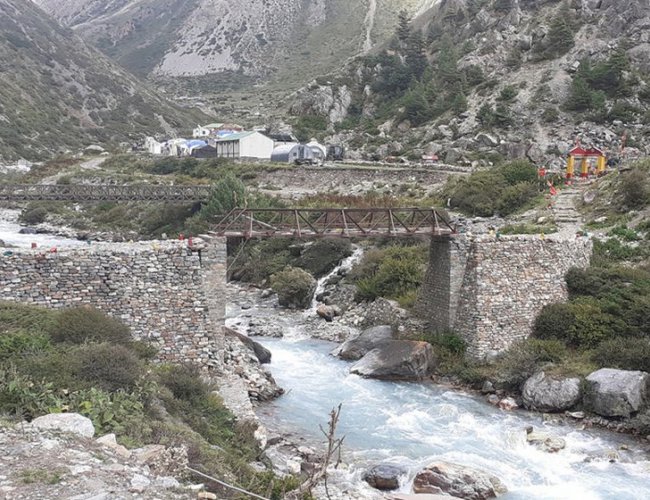
Despite open and unregulated border system, the border between Nepal and India is largely clear. However, there is a history of border encroachment by India since 1947, after the independence of India in several places.India has also constructed dams and embankments near the Nepal-India border in contravention of international law. These constructions have caused recurrent floods and inundation every monsoon in Nepal.
Locals protested against the above encroachments and constructions, but the politically divided Nepal could not take a firm national stance on them. At different times, the governments led by the pro-Indian political leaders allowed such activities in favor of India.
The above accounts are important understand the current long-standing dispute of Kalapani, Lipulekh and Limpiyadhura. This time Nepal has unitedly protested against the unilateral construction and inauguration of a road through LipulekhPass to connect New Delhi to Kailash-Mansarovar, which is a Nepali territory. The problem actually started when India updated its political map in November 2019 by including illegally occupied Nepali territory, Kalapani.
Nepal has now published a new political map showing these areas as part of its territory. India has rejected Nepal’s move saying it wasn’t based on historical facts and evidence.The Lipulekh Pass is claimed by Nepal based on the 1816 Treaty of Sugauli it entered with the British East India Company to define its western border with India.
But the British East India Company started to redraw maps towards the end of the 19th century showing different Kali River originating from Lipulekh. Nepal did not have the capacity to produce maps, so the maps originated from India continued to prevail in Nepal, and likewise copied to the schoolbooks.
The disputed territory falls at a strategic three-way junction between Nepal, India and China. It’s a geo-political and geo-economical issue, and both India and China have competing interests in Nepal.However, China has nothing to do with Nepal’s position on Kalapani, Lipulekh and Limpiyadhura.
Nepal had been seeking dates for talks to resolve boundary issues since November 2019, since India produced updated map that included Kapalani, but India did not take the request seriously.
It’s important that both sides refrain making hatred comments at this time of dispute. The escalating media-war between Nepal and India is not at the benefit of both the countries which has age-old connection of history, culture, religion and free-movement of people.
The border dispute between Nepal and India should be resolved through dialogue. Given the past history of dispute and encroachment, Nepal should seek the help of the United Nations if the two counties are unable to resolve through bilateral talks. There is also an option to go to the international court if the dispute gets escalated.
Leaders from both sides must be calm and composed. Meanwhile, Nepal should consolidate facts and evidence. Nepal also needs to assist the media for analytic journalism to reach the international community. Last but not the least, Nepal should continue working on the prevention and response to the COVID-19 and scaling up full economic support to the people living on Nepal-India border.
Author: Dr. Prabin Manandhar is an expert of international development. Currently, he is working in Iraq as Country Representative of The Lutheran World Federation. He is the Former Chair of the Association of International NGOs in Nepal (AIN). He is also a visiting faculty at the Kathmandu University. He can be reached at prabin.manandhar11@gmail.com
- Investing In Women: Accelerating Progress
- Mar 10, 2024
- Embracing The 'Empty Chair: Advancing Global Inclusivity And Equitable Development
- Dec 29, 2023
- Mental Health In Youth
- Jul 16, 2023
- Controversial Constituency Development Fund in Nepal: Public Concerns
- Jun 18, 2023
- International Women’s Day 2023: DigitALL
- Mar 06, 2023
















